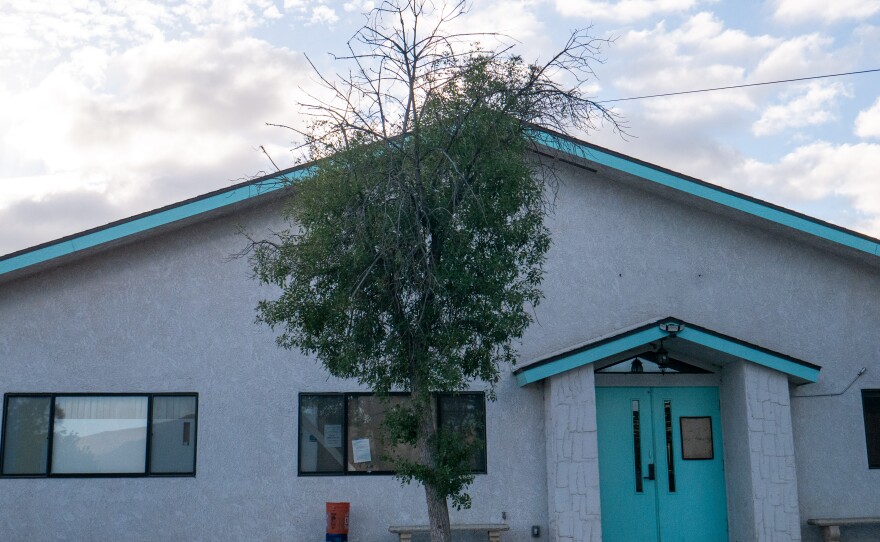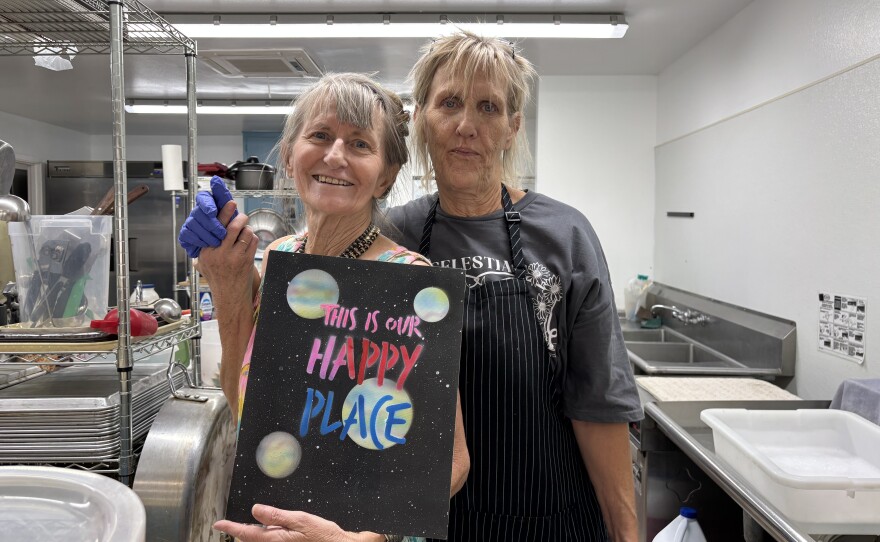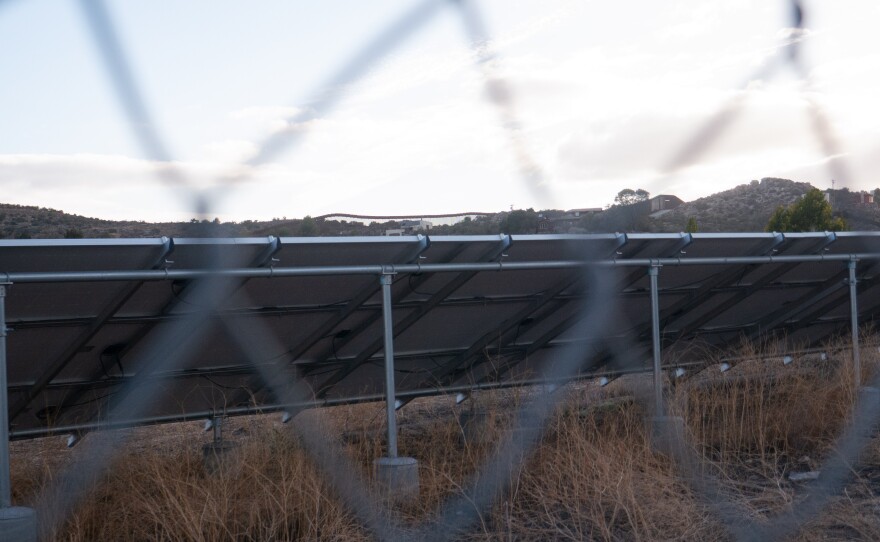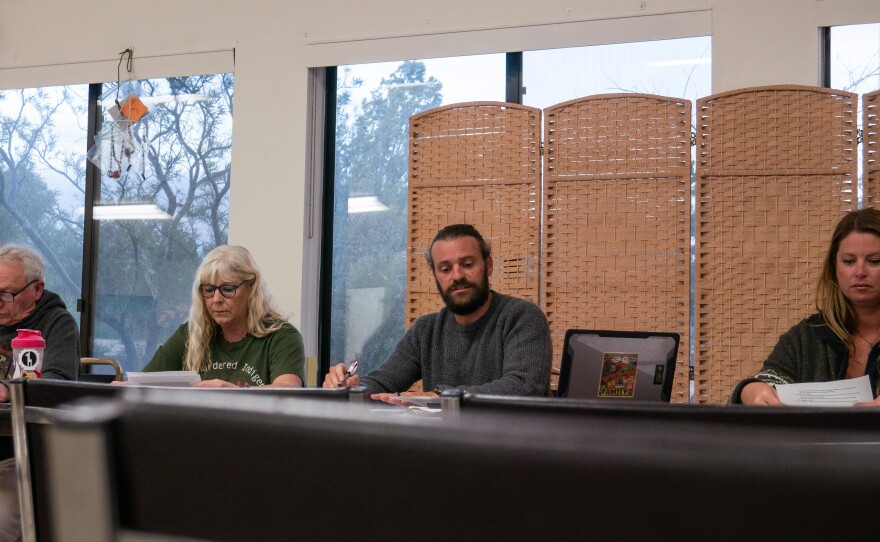Residents say Jacumba’s special charm threatened by solar project
November 20, 2025
Behind the teal doors of the Jacumba Hot Springs community center, Tanya Wilkins and her crew of volunteers are hard at work crafting a home cooked meal.
The center serves as a sort of public square for the backcountry town home to about 600 people.
“It’s been awesome for all of us just to have a place to get together to visit,” said Wilkins, who’s run the center’s meal service since 2020.

Earlier that morning, Wilkins stood in the vacant field next to the center. She spoke of the spiritual connection she has to her home — its open spaces, rugged beauty and Native American history.
“This is just a really sacred space up here,” Wilkins said. “It’s hard to explain it to anybody. It’s very soothing.”
However, change is coming to Jacumba that could soon make it look and feel a lot different.

In 2021, the San Diego County Board of Supervisors approved a more than 600-acre solar farm called Jacumba Valley Ranch (JVR) Energy Park. The plans call for vast arrays of solar panels to surround the roughly 100-acre town on one side.
Wilkins and others say the project is casting a long shadow over Jacumba and everything that makes it special.
This matters to residents not only from a lifestyle perspective, but also because tourists attracted by the area’s beauty and the hot spring mineral pools are the backbone of its economy. Residents filed an ultimately unsuccessful lawsuit to block the project in 2021.
“This is still not fair and we’re not going to give up,” Wilkins said.
Earlier this month, the county’s planning department approved the project’s grading permit and said in an emailed statement that construction could start any day.
JVR is one of many projects that are transforming backcountry land to meet the San Diego region’s ever-increasing energy demands. Jacumba is already home to a 58-acre SDG&E substation, transmission line and 20-megawatt solar plant.
Unequal burden
There is little argument in Jacumba about the ongoing need to produce renewable energy, but residents and business owners say with this project they are shouldering most of the burden while other communities get most of the benefit.
The JVR project promises to produce a 20-year supply of renewable energy for San Diego Community Power (SDCP), one of the regional energy providers. The developer, BayWa r.e Americas, estimates that the energy generated from the project could power at least 57,000 SDCP customers per year.
SDCP provides energy for seven local communities, including National City, Chula Vista, Encinitas, Imperial Beach, La Mesa and the city of San Diego. In 2020, the county’s unincorporated areas, including Jacumba, also became one of SDCP’s newest customers.

But right now, the public doesn’t know how much Jacumba will benefit because the terms of the power purchase agreement (PPA) are not public.
SDCP provided KPBS a copy of the PPA. However, the document was heavily redacted and did not contain key information regarding the project’s price and rates.
In an emailed statement, a representative from SDCP said the redactions were made to safeguard proprietary information.
“The PPA and subsequent amendments are redacted to protect Community Power’s market position as we continue to build out our long-term power portfolio,” the statement read.
Energy advocate and consultant Bill Powers said the redactions make it impossible to determine how this project would impact customers’ bills.
“The problem is, we just don’t know, because we can’t see the contract terms,” he said.
To get a glimpse of Jacumba’s potential future, one can drive about two hours north to Borrego Springs, another desert town that has historically struggled with renewable energy development.
David Garmon, a homeowner in Borrego Springs, says small towns often get the short end of the stick in deals between developers and power providers. Borrego Springs has multiple energy projects.
“We’re generating more electricity than we could possibly use, but we get zero benefit from that because that electricity is sold back to SDG&E, who then sells it back to us at the full retail rates,” Garmon said. “It’s an example of where the community’s paying the ecological cost for hosting those commercial solar farms, and gets none of the benefit.”
While SDCP energy rates are different from SDG&E, Powers worry the same could be true for Jacumba.
“In a rural area that has little capacity to fight back, little political power … the fact that Jacumba Hot Springs has other aspirations, it’s the scale of these things that is so impactful,” he said.
Compromise after pushback
Following the community pushback, the county required BayWa r.e. Americas to donate $4 million to a community fund. The county also required the company to increase the setback distance between the town and the project.
“We agreed to a $4 million community benefit agreement, which is actually one of the most lucrative in the history of the county, for all solar projects,” said Brandon Reinhardt, BayWa r.e. Americas senior director of land entitlements. “We were pretty proud of that, and part of the condition was to work with local nonprofits and the community to determine ways to allocate those funds.”

But residents say those actions won’t reverse the long-term impacts of the project.
“This was the last available land that our community could ever grow into,” Osborne said. “We don’t plan on being some big city … but that’d be the only available space left.”
The company has broken ground on the project and the solar farm is expected to be operational by late next year.
But community members say they’re not giving up. Osborne said he’s preparing another legal complaint.
“They’re trying to rig the system to push projects far from cities and to do this style and claim it’s best for the environment,” he said. “But I think there’s a lot of evidence in this particular case, especially San Diego County, that’s just not true.”
Search
RECENT PRESS RELEASES
Related Post



